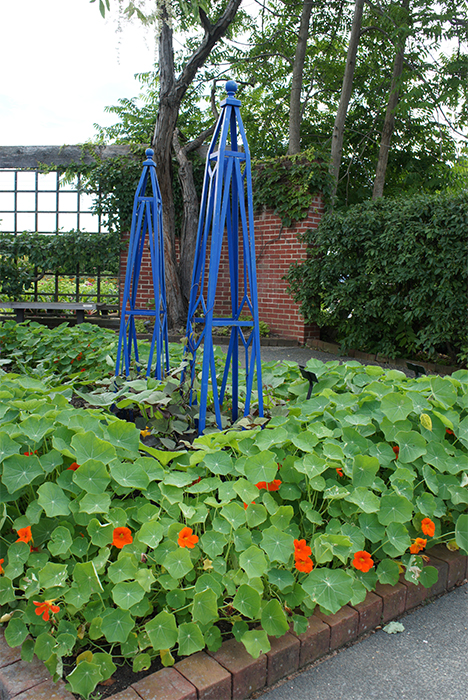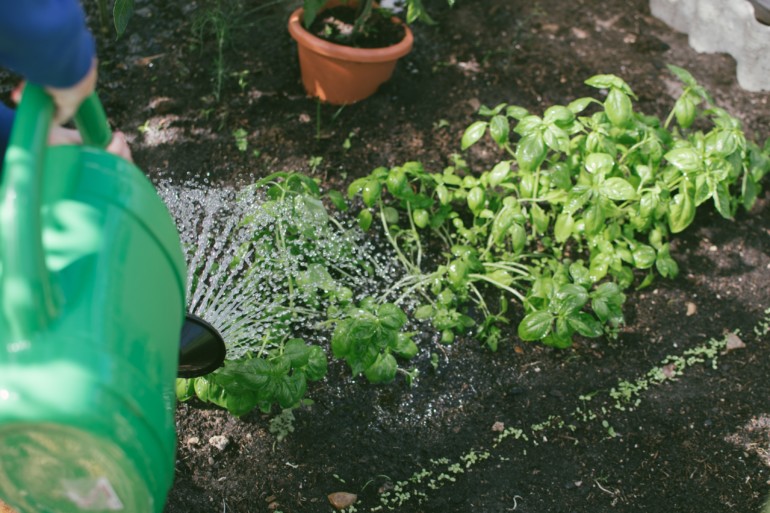The garden is a love song, a duet between a human being and Mother Nature. —Jeff Cox
Have you always wanted to start your own garden but been afraid of failure? Like most things in life, gardening is trial and error. Talk to any gardener and they’ll happily admit to killing plenty of plants. It’s part of the learning process and the key to gardening success.
“Work into gardening gradually,” says Shawna Coronado, a wellness and organic lifestyle expert. “Take one small step each year in the garden and build on it.”
Cast aside those fears and arm yourself with these essential tips from food gardening pros and you’ll be eating the homegrown goodness you’ve been envisioning in no time.
Location, Location, Location
Just as you might look for that ideal spot to build a home, the same holds true for a food garden. Unlike perennial gardens, which can be created based on the amount of available light, food gardens are pretty particular.
“The amount of sunlight is the most important thing that will determine if it’s possible to grow a food garden,” says Jeanne Nolan, president and founder of The Organic Gardener.
Six hours of sun is ideal, and eight is even better. According Nolan, an inexpensive device like a SunCalc can measure sun exposure throughout the course of the day. If you’re more of a do-it-yourselfer, simply stepping into your yard or onto your balcony during the course of the day and jotting down the sun’s movement will help you determine the right location.
Should you find that the area receives less than the ideal six hours, fear not. Crops like leafy greens, beans, peas, cucumbers, beets, and most herbs, with the exception of the Mediterraneans like rosemary and lavender, will thrive. Nolan also says the smaller-fruited cherry tomatoes will do well in lower light situations.
Dirt is Soil

Until now, you’ve probably never given much thought to dirt. In the gardening world, dirt is soil and soil is the lifeblood of the garden.
“There’s an old rule of thumb,” says Coronado. “No roots, no fruit.”
If you’ll be planting directly in the ground, a soil test is paramount as it will identify dangerous contaminants like lead, and also help determine what amendments your soil might require. For a list of labs, visit extension.illinois.edu/soiltest.
The Midwest is notorious for clay soil, making it vital that amendments like compost and aged manure are introduced to loosen the soil and provide a fertile planting bed. The more compost the better. This becomes less of an issue if you’ll be planting in containers or raised beds which allow the gardener more control over the soil. For raised beds, you can simply order organic garden soil from a reputable company. Bags of organic potting soil can be purchased at a nursery or garden center for containers.
According to Nolan, a planting depth of 12 to 18 inches is ideal for most crops. Gardener’s Supply Company has a nifty little soil calculator that will determine just how much you’ll need to fill the dimensions of a raised bed.
Keep in mind container gardens tend to dry out faster and will require a keen eye and a ready watering can to keep seeds evenly hydrated.
Garden With the Kids
Kids have an innate interest in nature — and a seemingly preprogrammed disdain for veggies. Get kids to grow their veggies from seeds or seedlings though, and they’re much more likely to try and ultimately like what they’re eating. Let’s face it, homegrown puts store-bought to shame.
With names like rainbow carrots, Easter egg radishes and blue potatoes, what kid wouldn’t want to get their hands dirty and plant a garden?
“If you can expose them to something they love like a favorite vegetable they’ve grown themselves, it helps plant that seed in them,” says Linda Ly, creative force behind the popular blog Garden Betty.
Ly says starting seeds indoors is a perfect opportunity for children to witness the process from seed to germination. A bright, south-facing window, containers and seed-starting mix will provide the base for your experiment. Planting time depends on the recommendation that appears on the back of all seed packets. They provide instruction for direct sowing times, as well as indoor seed starting, transplanting times and the number of days to harvest. Carrots, beets, radishes, beans, cucumbers and leafy greens are some great beginner plants offering a lot of bang for your buck.
It’s not a bad idea to keep a journal to track the progress of the garden from planting to harvesting. In time, and as your knowledge grows, garden tasks will become second nature.
For crops started indoors, be sure to “harden off” seedlings. Accustomed to predictable indoor conditions, seedlings require a period of time to adjust to temperature fluctuations. Place them in a protected location outside for an hour the first day, and repeat the process for a week. For each day, add another hour. At the end of the week, the seedlings will be ready to transplant into the garden.
While fertilizing is optional, all plants thrive on a little extra TLC. After all, it takes a lot of energy to produce delicious food. Nolan uses a liquid fish emulsion and seaweed spray every other week. A side dressing of granulated organic fertilizer is applied once a month at the height of the growing season.
There will always be factors that work against the gardener. Too much rain, too little rain, insect infestations, not enough sun. Why fret over what we can’t control? After all, there’s always next year.
“There are so many positive lifestyle changes that happen when a family puts in a garden,” Nolan says. “Garden together, harvest together, cook together, eat together.”

Here are some gardening items we love, that will come in handy this season:
If you buy something through our links, Make It Better Media Group may earn an affiliate commission.

